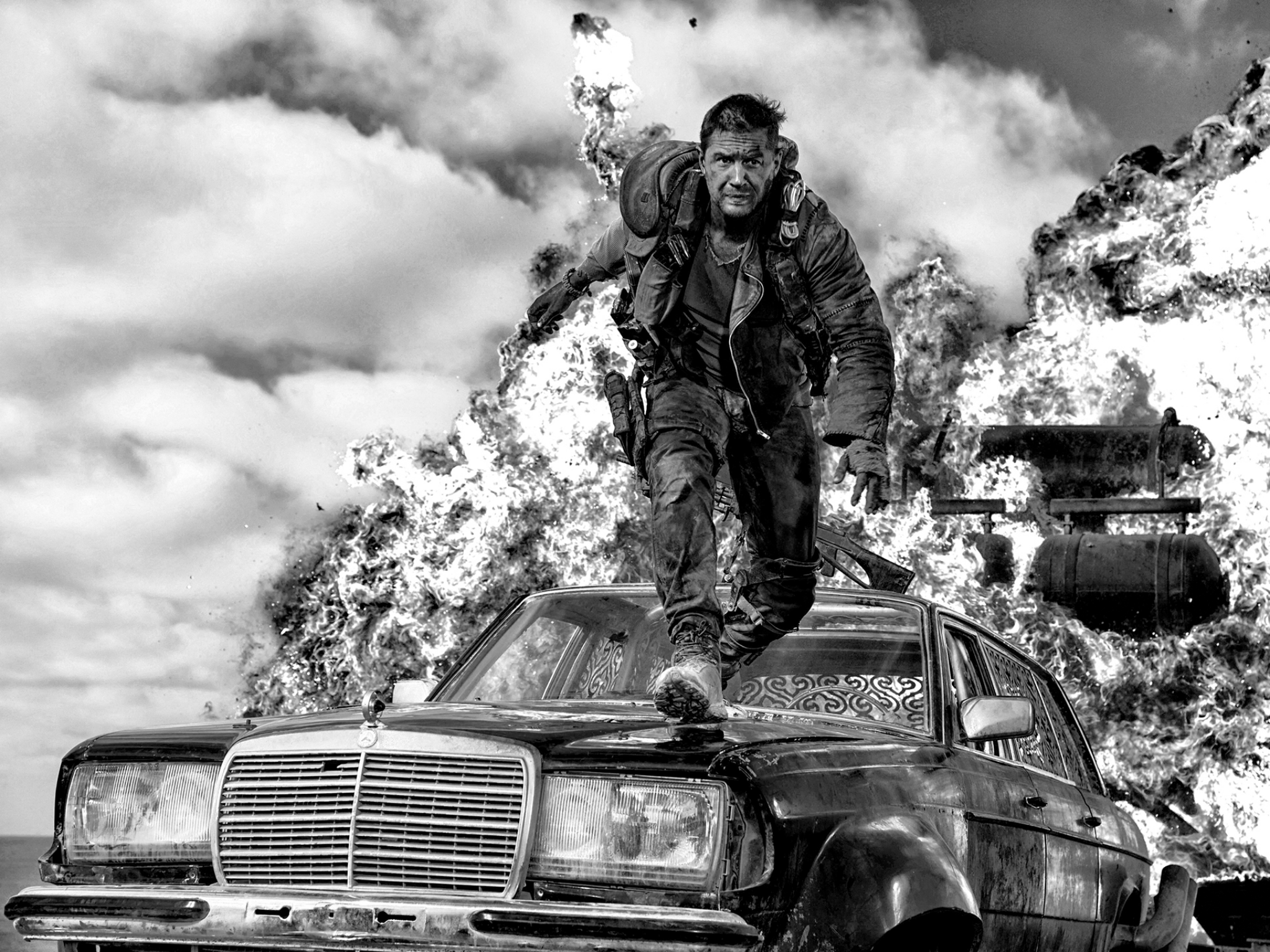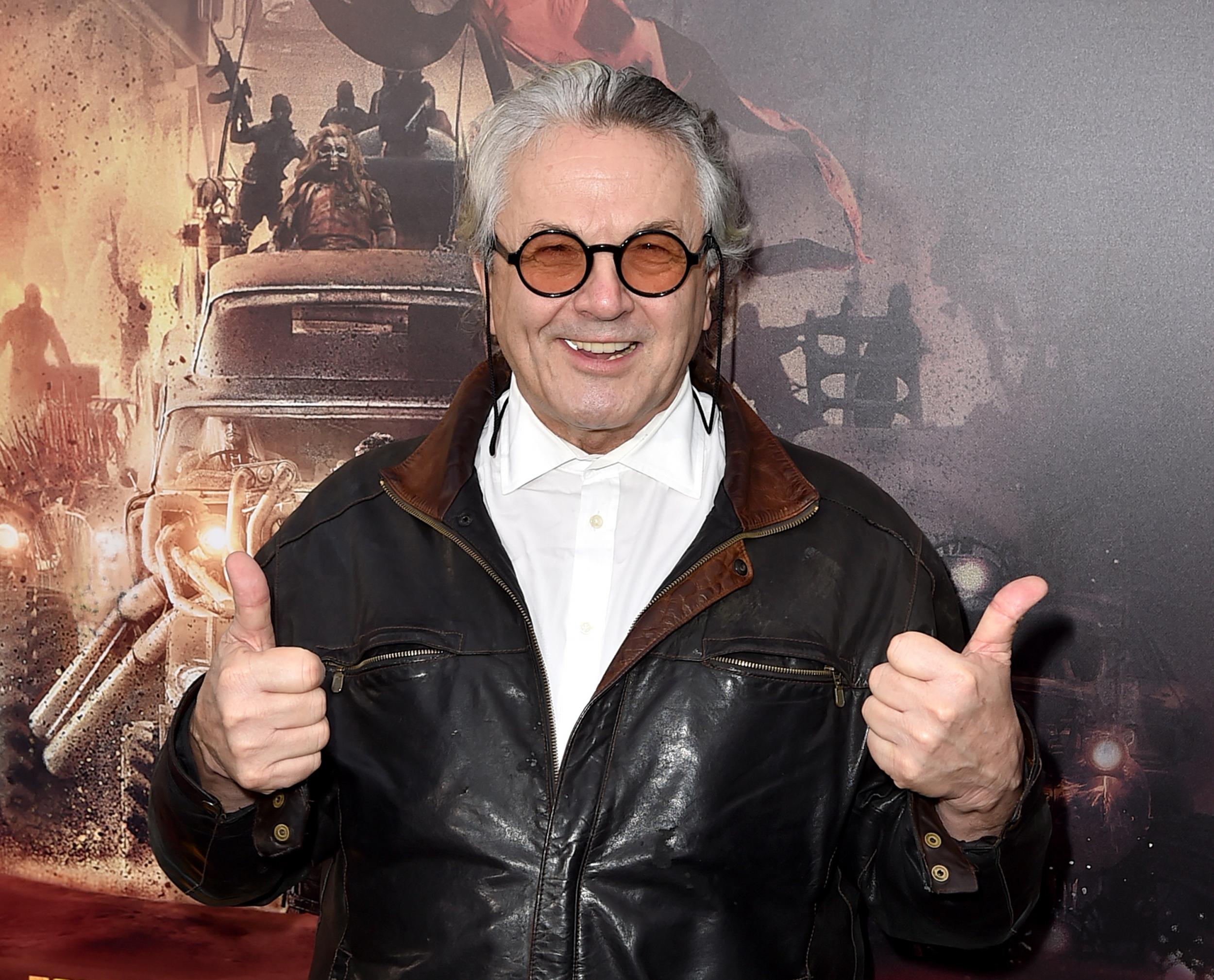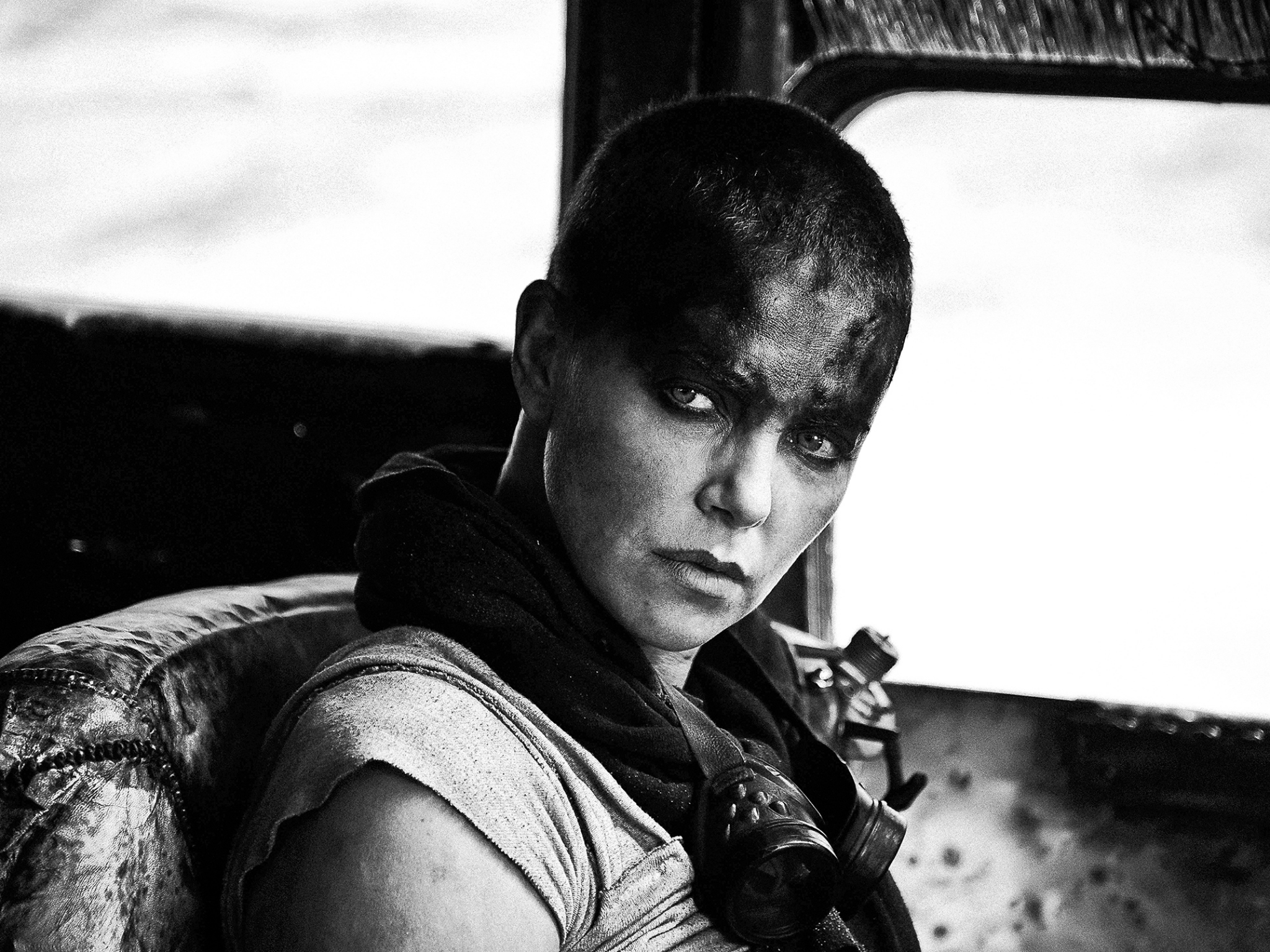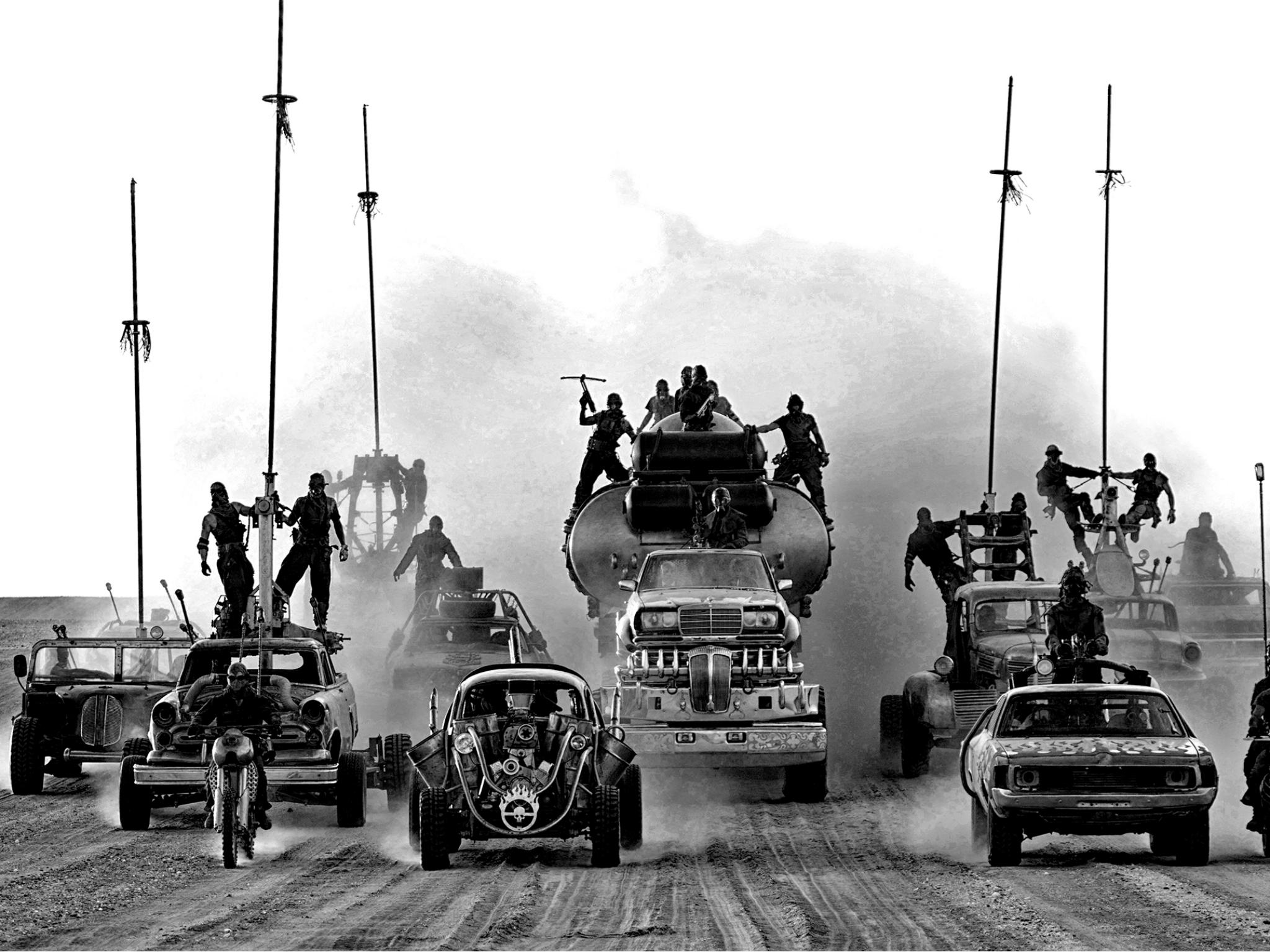Mad Max's George Miller on turning Fury Road into a black-and-white film and the Mad Max: The Wasteland sequel
A special ‘Black & Chrome’ edition of George Miller’s blockbuster, starring Tom Hardy and Charlize Theron, hits the big screen for one night only before being released on Blu-ray

Your support helps us to tell the story
From reproductive rights to climate change to Big Tech, The Independent is on the ground when the story is developing. Whether it's investigating the financials of Elon Musk's pro-Trump PAC or producing our latest documentary, 'The A Word', which shines a light on the American women fighting for reproductive rights, we know how important it is to parse out the facts from the messaging.
At such a critical moment in US history, we need reporters on the ground. Your donation allows us to keep sending journalists to speak to both sides of the story.
The Independent is trusted by Americans across the entire political spectrum. And unlike many other quality news outlets, we choose not to lock Americans out of our reporting and analysis with paywalls. We believe quality journalism should be available to everyone, paid for by those who can afford it.
Your support makes all the difference.It’s almost two years ago to the day since Mad Max: Fury Road blew the roof off cinemas the world over. George Miller’s long-gestating sequel to his original Mad Max trilogy, which starred Mel Gibson as the post-apocalyptic Road Warrior, left audiences floored; like at its 8.30am press screening at the Cannes Film Festival, where one man in the upper balcony – packed with the usual jaded critics – let out a howling guttural roar of appreciation as the end credits rolled. A primal scream that the Palais has rarely, if ever, witnessed before.
Miller, the genial 72-year-old Australian, smiles at the story. Despite a career that stretches back to the 1970s, and includes such beloved family films as Babe and Happy Feet, the response to Fury Road was unprecedented. “What pulled me into cinema were those moments where I walked out of a movie theatre and just felt a sense that anything’s possible in the cinema,” he reflects. “I’d like to think that may have happened to some extent – probably to a lesser extent – with this movie.”
He’s being ultra modest, of course. Fury Road grossed $378m (£293m) worldwide, was arguably one of the best-reviewed movies of 2015 and went on to claim six Oscars from ten nominations. It did so with fans embracing British star Tom Hardy as the new Max, an arguably even more feral, monosyllabic version of the anti-hero first played by Gibson. Alongside him, a new heroine was born in the shape of Charlize Theron’s one-armed Imperator Furiosa, who teams up with Max in the chase of a lifetime.

This weekend, Fury Road is back in cinemas, though not as you know it. Miller’s astounding masterpiece is, in a rather unique move, returning to the big screen in black and white. Dubbed the “Black & Chrome Edition”, it is playing for one night only on Sunday before becoming available on Blu-ray in mid-May. It’s a bizarre and slightly bonkers idea for a blockbuster, but one that feels entirely in keeping with the insanity of Miller’s film.
The idea, says the director, stems right back to the days of his first sequel, 1981’s Mad Max 2: The Road Warrior. “Way back, when the score for Mad Max 2 was being recorded, the orchestra would play to a high contrast black-and-white slash dupe,” he explains. “This was sacrificial print and a lot cheaper than a coloured version. I was struck by how much more ‘iconic’ the images felt – more elemental, abstract and ‘authentic’. Ever since I wanted to see a Mad Max movie in black and white.”

Relatively easy to achieve in the digital age, says Miller, he took the idea to Fury Road’s backers Warner Brothers and they decided to give it a shot. “I love that they called it ‘Black & Chrome’,” he adds – in what perhaps is a reference to the villainous water-hoarding Citadel leader Immortan Joe’s line to Nicholas Hoult’s bald-headed Nux as he promises “you will ride eternal, shiny and chrome” to the gates of Valhalla.
It’s surreal – and rather beautiful – to see the parched yellows of the Namibian desert where Fury Road was filmed given a monochrome sheen. Could Miller see other blockbusters take this approach, or even release an original version in black and white? After all, this old-fashioned format tends to be reserved for arthouse movies these days, like the about-to-be-released François Ozon movie Frantz. “It depends on the nature of the story,” he says. “Bottom line – why not?”

Miller is somewhat less forthcoming on the idea of shooting another Mad Max movie in black and white. “It depends on the story,” he says, again, “and the nature of the scenes.” The director is understandably cautious about setting the internet ablaze. Just over a year ago, while attending the Golden Globes awards, he was quoted in the New York Post’s Page Six column as saying: “Those Mad Maxes take forever. I won’t do those any more” – a comment he later denied, claiming it was “a completely garbled interview”.
One thing is for certain: during the eternal delays in launching Fury Road, Miller and co-writer Nico Lathouris wrote two further scripts. “We dug down deep into the subtext, the backstory of all the characters, and indeed the world… and without really thinking about it, we wrote two other screenplays just as part of the bible of the stories,” Miller tells me. With Tom Hardy said to be committed, the first is currently titled Mad Max: The Wasteland. “Somewhere, if the planets align, there will be two other films.”

Watch Apple TV+ free for 7 days
New subscribers only. £8.99/mo. after free trial. Plan auto-renews until cancelled

Watch Apple TV+ free for 7 days
New subscribers only. £8.99/mo. after free trial. Plan auto-renews until cancelled

What might these contain? Miller has already hinted that he’d be interested in a prequel detailing the life of Furiosa. Already, backstory to her character – as well as Nux, Immortan Joe and, of course, Max Rockatansky – appeared in the 2015 series published by DC Entertainment’s imprint Vertigo Comics. Some fans were disappointed with the Furiosa comic’s damsel-like portrayal of the Wives of the Citadel, the five women enslaved by Immortan Joe that Furiosa steals away in the War Rig in Fury Road.
Yet it’s clear that Miller has thought long and hard about these characters over the fifteen years it took to get the film to the screen, an essential move in providing a backbone to the franchise. “A movie like Fury Road is told in a very wild, helter-skelter way, so the underlying logic of everything in the film had to be pretty rigorous otherwise the film would’ve been chaotic,” he says. “So one of the advantages of the many delays was that we were able to spend time getting into these backstories.”
Take the Doof Warrior, the blind musician who is hooked up to the front of one of Immortan Joe’s rigs, playing a flame-throwing electric guitar to whip up the troops. “I know who his mother was. I know how it was that a man who is mute and blind survived the apocalypse. I know his story very well!” says Miller. “If we get to make another movie, the Doof Warrior will be there!”
Miller insists before he tackles another Mad Max movie that he will make something “quick and small just to reboot the brain”, claiming he has two stories that fit the bill. But after the enthusiasm that greeted Fury Road, it’s hard to believe he won’t return to the Wasteland next. “I’m hard-wired for the imaginative life,” he says. “It’s part of who I am. These characters and these worlds tend to swirl around in the back of your brain like imaginary friends. It’s easy to go back to them.”
’Mad Max: Fury Road – Black & Chrome Edition’ shows in selected cinemas on 30 April. The Blu-ray and digital download is available to buy from 15 May
Join our commenting forum
Join thought-provoking conversations, follow other Independent readers and see their replies
Comments